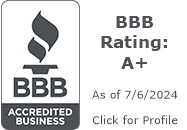Home renovations can significantly enhance the value, comfort, and functionality of your home. However, funding these improvements can be challenging. One popular option for financing home renovations is a Home Equity Line of Credit (HELOC). In 2024, using a HELOC for home renovations remains a strategic and flexible way to access the funds you need. This guide will explore how a HELOC works, its benefits, and how you can use it to finance your home improvement projects effectively.
What Is a HELOC?
A Home Equity Line of Credit (HELOC) is a revolving line of credit that allows you to borrow against the equity you have built up in your home. Unlike a home equity loan, which provides a lump sum of money, a HELOC gives you access to a credit line that you can draw from as needed, similar to a credit card.
How It Works:
- Credit Line: Your lender will approve you for a maximum credit limit based on the equity in your home and your creditworthiness.
- Draw Period: Typically, a HELOC has a draw period of 5 to 10 years, during which you can borrow from the credit line. During this time, you often only need to make interest payments on the amount borrowed.
- Repayment Period: After the draw period ends, you enter the repayment period, which can last 10 to 20 years. During this time, you’ll need to repay both the principal and interest.
Why Use a HELOC for Home Renovations?
Using a HELOC for home renovations offers several benefits, making it an attractive option for homeowners looking to improve their property.
1.Flexibility in Borrowing
One of the main advantages of a HELOC is its flexibility. You can borrow as much or as little as you need, up to your credit limit, and you only pay interest on the amount you’ve borrowed. This is particularly useful for home renovations, where costs can fluctuate, and you may not need all the funds at once.
2.Lower Interest Rates
HELOCs generally offer lower interest rates compared to personal loans or credit cards, making them a more affordable option for financing large home renovation projects. The interest rates on HELOCs are typically variable, meaning they can change over time, but they start lower than most unsecured loans.
3.Potential Tax Benefits
The interest paid on a HELOC may be tax-deductible if the funds are used for home improvements that increase the value of the home. It’s important to consult with a tax professional to understand the specific tax implications based on your situation.
4.Increase Your Home’s Value
By using a HELOC to finance renovations, you can make strategic improvements that increase the value of your home. Projects like kitchen remodels, bathroom upgrades, and energy-efficient installations often provide a good return on investment, which can offset the cost of the HELOC.
How to Use a HELOC for Home Renovations
When planning to use a HELOC for home renovations, it’s important to approach the process strategically to maximize the benefits and minimize the risks.
1.Evaluate Your Home Equity
Before applying for a HELOC, assess how much equity you have in your home. Lenders typically allow you to borrow up to 85% of your home’s value, minus any outstanding mortgage balance. For example, if your home is worth $400,000 and you owe $250,000 on your mortgage, you may be able to access a HELOC with a credit limit of up to $90,000.
2.Plan Your Renovation Projects
Identify the home renovation projects you want to undertake and estimate their costs. Prioritize projects that will add the most value to your home or improve your quality of life. Common renovations that provide a high return on investment include:
- Kitchen Remodel: Upgrading appliances, countertops, and cabinets.
- Bathroom Renovation: Installing new fixtures, tiles, and energy-efficient features.
- Energy Efficiency Improvements: Adding insulation, replacing windows, or installing solar panels.
- Outdoor Enhancements: Landscaping, adding a deck or patio, or improving curb appeal.
Tip: Get multiple quotes from contractors to ensure you’re getting the best price for your renovations.
3.Apply for a HELOC
Once you’ve evaluated your equity and planned your renovations, it’s time to apply for a HELOC. Shop around and compare offers from different lenders to find the best terms and interest rates. The application process will require you to provide financial documentation, such as proof of income, credit history, and details about your home’s value.
4.Use the Funds Wisely
During the draw period, you can withdraw funds from your HELOC as needed for your renovation projects. It’s important to track your spending carefully and avoid borrowing more than you need. Since a HELOC is secured by your home, failing to repay the loan could put your property at risk.
Tip: Keep detailed records of all renovation expenses, including receipts and contracts, to ensure you can accurately track costs and claim any potential tax deductions.
5.Consider Repayment Strategies
Once the draw period ends, you’ll enter the repayment phase. It’s crucial to have a repayment plan in place to manage your finances effectively. Consider these strategies:
- Extra Payments: If possible, make extra payments toward the principal during the draw period to reduce the overall balance.
- Refinance: If interest rates rise significantly during the draw period, consider refinancing your HELOC into a fixed-rate home equity loan to lock in a stable payment structure.
- Budgeting: Create a budget that accounts for the repayment of the HELOC, ensuring that it aligns with your long-term financial goals.
Potential Risks and Considerations
While a HELOC can be a great tool for financing home renovations, it’s important to be aware of potential risks:
- Variable Interest Rates: Since HELOCs often come with variable interest rates, your payments could increase if rates rise during the draw or repayment periods.
- Debt Management: Borrowing against your home equity increases your overall debt. Ensure that you can manage the additional debt responsibly without overextending yourself financially.
- Home Value Fluctuations: If the real estate market declines and your home loses value, you could end up owing more than your home is worth, particularly if you’ve borrowed a large amount against your equity.
Tip: Before taking out a HELOC, consult with a financial advisor to determine if it’s the best option for your situation and to discuss any potential risks.
Conclusion:
A HELOC can be an effective and flexible way to finance home renovations, allowing you to access the funds you need while potentially increasing your home’s value. By carefully planning your projects, using the funds wisely, and staying on top of repayments, you can make the most of your home equity in 2024.
Whether you’re looking to modernize your kitchen, add a new bathroom, or improve your home’s energy efficiency, a HELOC provides the financial flexibility to achieve your renovation goals. Remember to consider the potential risks, compare offers from different lenders, and create a solid repayment plan to ensure that your home improvement journey is both successful and financially sound.
Disclaimer
Please consult a qualified tax professional for individual guidance. This article is for illustrative purposes only.






